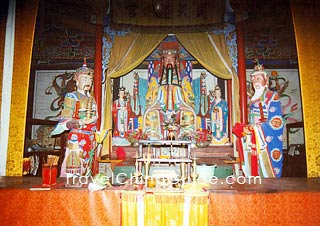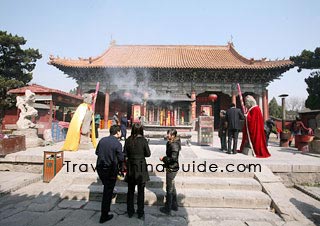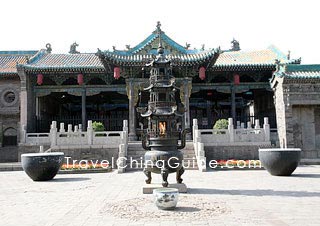Taoist Temples in China
 |
| Yuquan Temple, Tianshui, Gansu |
Taoist temples of different scales are scattered all over China. Generally, they can be divided into three kinds: palace-like and ordinary temples, and simple hut or caves. Though of various sizes, they are built to serve the same function.
People may get confused in distinguishing a Taoist temple from a Buddhist temple because they are much alike from the outside. It is true that many methods of Taoist construction imitate those of Buddhism, but there exist some minor difference between them. For example, the holy statues of Dragon and Tiger are set in front of the main gate of a Taoist temple, while statues of two giants guard in the same position in a Buddhist one. The Taoist trinity, San Qing (Three Pure Gods), is worshipped in Taoist halls. They are Yu Qing (Jade Pure), Shang Qing (Upper Pure) and Tai Qing (Great Pure). In the main hall of a Buddhist temple on the other hand, the Buddha trinity is placed. Besides, themes of statue and murals in Chinese Taoist temples are those familiar to common people and the religious atmosphere is not as intense as in Buddhist temples.
|
|
Taoism encourages human beings to live harmoniously with nature. Most Taoist temples are built along a mountain side. Many of them are wooden-framed, which is believed to be beneficial to health.
Related Link: Taoist Architecture Style, Hall of Imperial Peace (Qin’andian) in Forbidden City
Chinese Temples
- Buddhist Temples
- Taoist Temples
- Islamic Mosques
- Confucius Temples
- Chinese Temples Pictures
- Last updated on Nov. 14, 2023 -

